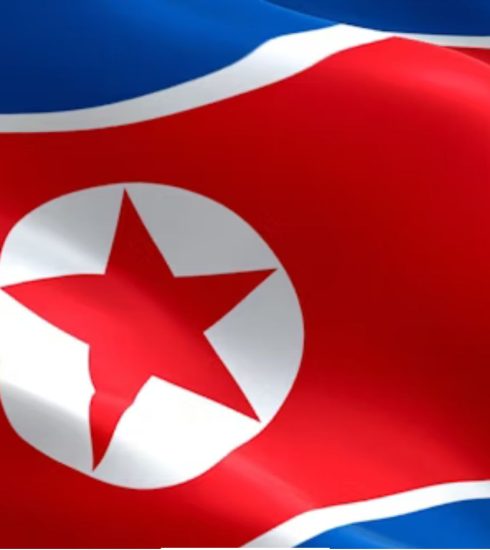The Karachi Project: A Journey Through Misconceptions and Terrorism
In 1977, an organization named the Students Islamic Movement of India (SIMI) was established with the aim of improving the conditions of Indian Muslims, focusing on education and healthcare. However, over time, SIMI gradually transformed into a radical organization. By the 1980s, it became apparent that SIMI was becoming increasingly extreme, publishing radical literature and attempting to establish local political control. This shift raised serious concerns about national security.
The situation worsened after the 9/11 attacks in the United States. In response to the attacks, SIMI members organized rallies in various Indian cities, carrying posters of Osama bin Laden and praising his actions. Alarmed by these activities, the Indian government banned SIMI in 2001. Despite the ban, SIMI continued to operate underground.
The Birth of the Karachi Project
Post-9/11, the United States began to acknowledge global terrorism as a critical issue. Under international pressure, particularly from the U.S., Pakistan faced scrutiny for its support of terrorist organizations like Lashkar-e-Taiba (LeT) in Kashmir. To mitigate this pressure, Pakistan relocated Hafiz Saeed, LeT’s leader, from Kashmir to Karachi. Here, Hafiz Saeed collaborated with underworld don Dawood Ibrahim and ISI officials to devise a new strategy: the Karachi Project.
Between 2002 and 2004, this project was developed with a singular goal—to use radicalized Indian Muslims for carrying out terrorist attacks in India. Pakistani operatives would recruit Indian Muslims, train them in Karachi, and send them back to India to execute terrorist activities. This approach provided plausible deniability for Pakistan, as attacks appeared to originate from within India.
Implementation of the Karachi Project
The ISI sought to use Dawood Ibrahim’s networks to identify and recruit Indian Muslims. Radical preacher Zakir Naik, known for his controversial speeches, also became an integral part of the project. By 2004, the ISI formally launched the Karachi Project, which aimed to destabilize India through trained operatives who could manufacture weapons and bombs using local materials.
The Karachi Project’s operations led to several terrorist attacks across India between 2005 and 2007, including the Varanasi bombings, the Indian Institute of Science attack in Bangalore, the Mumbai train blasts, and the Nagpur RSS headquarters attack. The project not only facilitated these attacks but also aimed to tarnish India’s global image by portraying internal communal tensions.
Shifting Narratives: The Creation of “Saffron Terror”
During this period, a conspiracy emerged to link these attacks to “Saffron Terror”—a term alleging that Hindu extremist groups were responsible for such incidents. The narrative gained momentum when individuals like Lt. Col. Shrikant Purohit, a decorated Indian Army officer, and Sadhvi Pragya Singh Thakur were accused of involvement in the Malegaon blasts of 2008.
Lt. Col. Purohit, who had an illustrious career in counter-terrorism, was accused of orchestrating the blasts. Despite evidence pointing to the Karachi Project, certain elements within the police and intelligence agencies sought to shift the blame to “Hindu terrorism.” During interrogations, Purohit faced intense pressure to implicate prominent figures, including political leaders, but he refused.
The Role of Ajmal Kasab in Exposing the Karachi Project
The 26/11 Mumbai attacks provided further clarity on Pakistan’s role in exporting terrorism to India. The lone surviving terrorist, Ajmal Kasab, revealed during his interrogation how he had been radicalized and trained to pose as an Indian Hindu. His fake identity card and the red thread tied around his wrist were deliberate attempts to create a false narrative of Hindu involvement.
Kasab’s confession highlighted the extent of misinformation spread by Pakistani operatives. He admitted that he was misled into believing that Muslims in India were not allowed to pray, a claim disproved when Indian authorities took him to a mosque during his custody.
Dismantling the Karachi Project
The unraveling of the Karachi Project began with the efforts of Asif Ibrahim, the then Director of Intelligence Bureau (DIB) and a true patriot. Ibrahim dismantled the fabricated narratives of “Saffron Terror” and exposed the role of Pakistan-backed organizations like Indian Mujahideen and SIMI. His leadership led to the dismissal of several corrupt officials who had attempted to frame innocent individuals.
By 2018, both Lt. Col. Purohit and Sadhvi Pragya were exonerated. The Karachi Project’s operations were dismantled, and its influence diminished significantly. The narrative of “Saffron Terror,” once propagated widely, began to fade as its foundation crumbled under the weight of truth.
Conclusion
The Karachi Project serves as a grim reminder of the complexities of terrorism and the dangers of politicized narratives. While Pakistan’s strategy aimed to destabilize India, the efforts of individuals like Asif Ibrahim ensured that truth prevailed. Today, as we reflect on incidents like the 26/11 attacks, it is crucial to remember the sacrifices of patriots like Tukaram Omble, who gave their lives to protect India, and to remain vigilant against both external threats and internal conspiracies.






